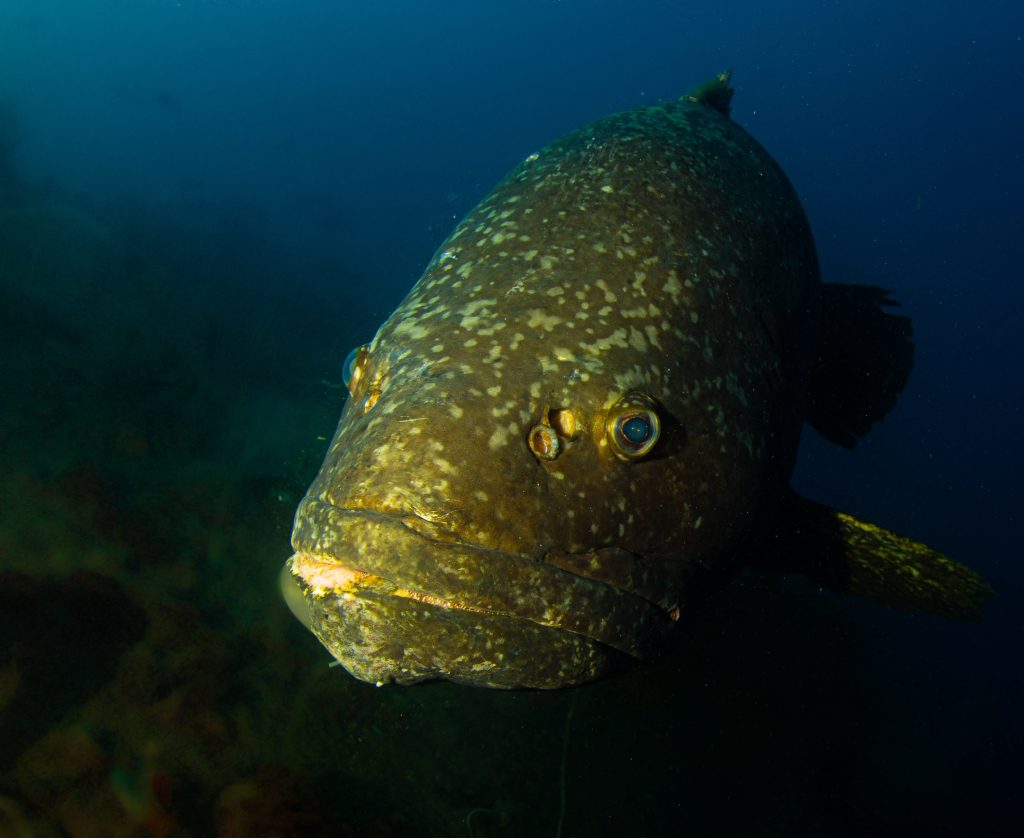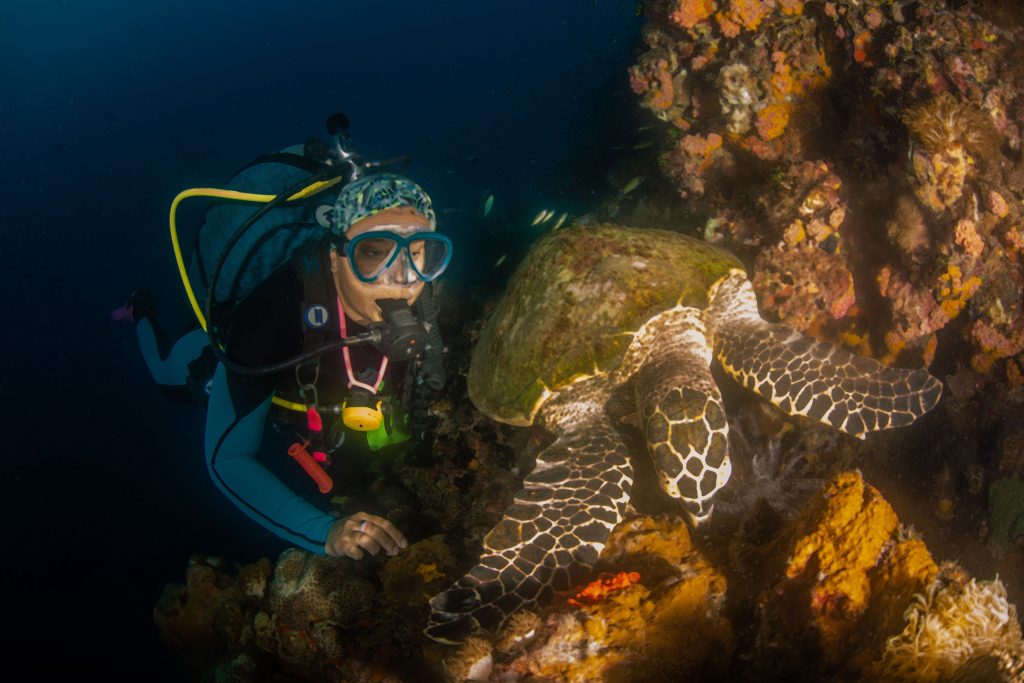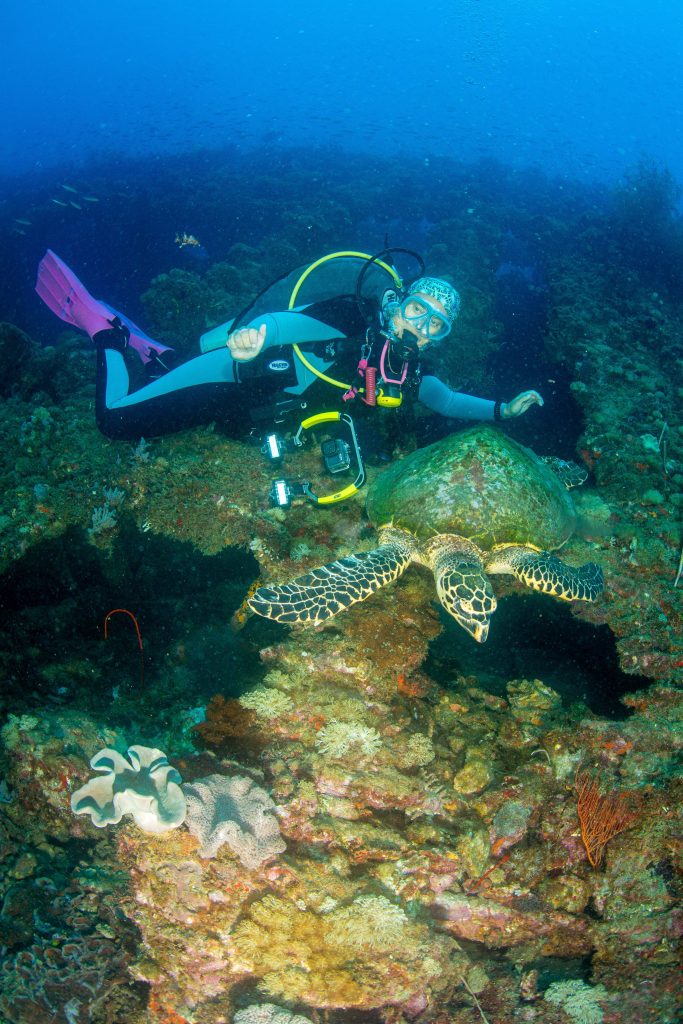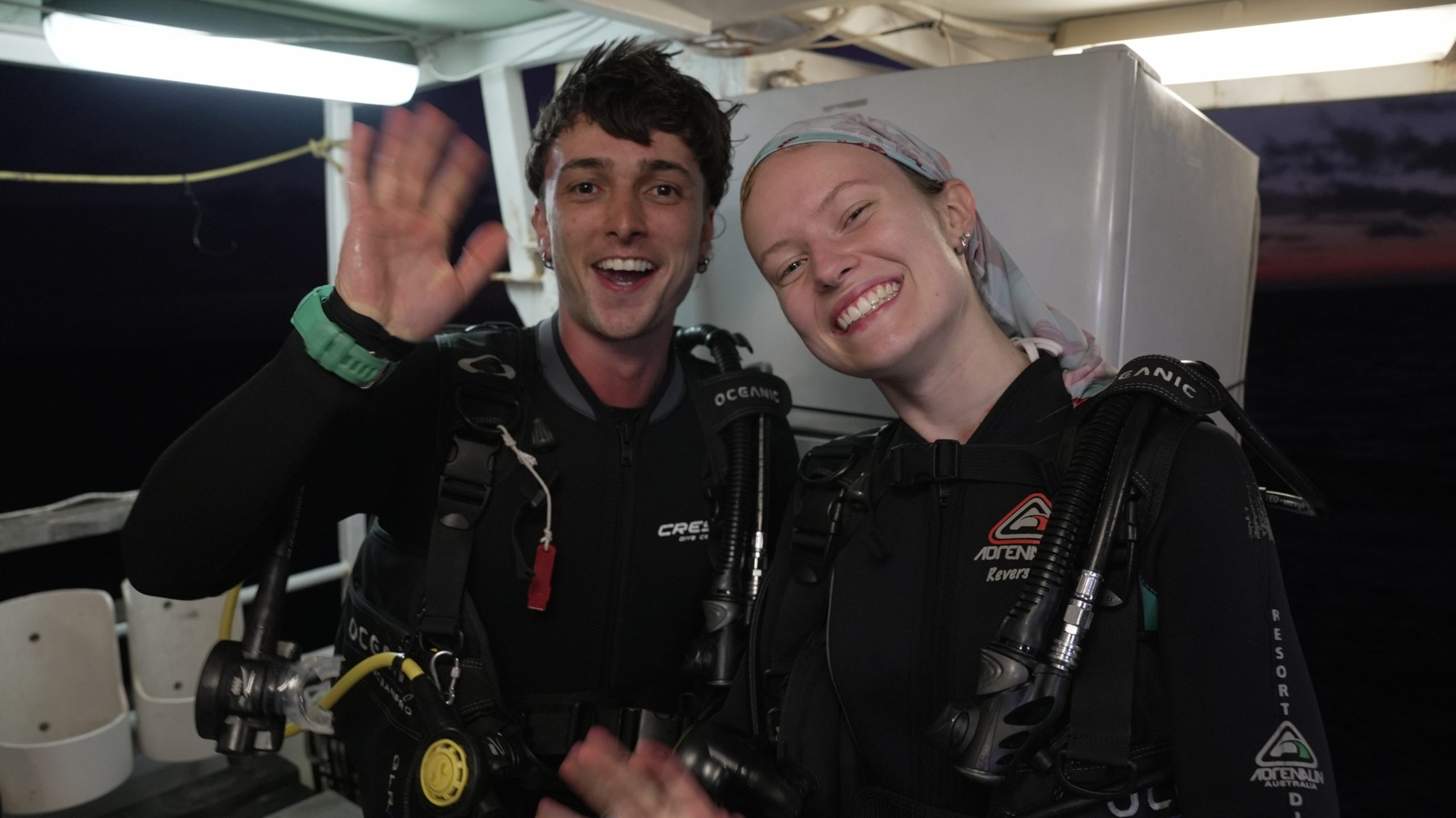It is one of the best wreck dives in the world, arguably one of the top ten dive sites in the world – and yet we know so little about it. Who did the last inventory of the megafauna at the Yongala?
When I was there earlier this year, on May 6th, 2024, I got to swim with a rare stingray, a Megatrygon microps. The largest stingray species in the world. Apparently.
A few months later, on September 3rd, 2024, as part of the inaugural Megafauna Expedition, there were no M. microps.
I was hoping that at least one of the photographers on the expedition would find and photograph perhaps the largest fish at the Great Barrier Reef, nicknamed VW.
VW is the nickname for the largest of the resident Queensland Groupers reportedly at the Yongala, with the scientific name Epinephelus lanceolatus. Reportedly the size of a Volkswagen Beetle car – that would make this fish four metres long. Is that an exaggeration? I’ve never seen VW.
How big is VW really – and exactly, and when is he at the Yongala?
Fifteen of us got into the water the very first morning of the inaugural Megafauna Expedition. But not a VW in sight.
Which begs the question for me: when is that fish reliably at the Yongala shipwreck? Does VW move with the season, as well as the time of day?
One of our team photographs, Dave Baxter, photographed a very large Queensland Grouper, not VW. I estimate the fish that he photographed to be 2.3 metres.

More about this fish soon – hopefully with some information about other Queensland Groupers photographed by Dave. Perhaps even some historical photographs taken by Dave of VW back 25 years. Has VW really been around that long? .There must have been a census of the fishes of the Yongala shipwreck. When was that – when was the last census? I know that the Australian government undertakes an annual census of the penguins at Antartica. And where is the Australian Institute of Marine Science (AIMS) on all of this, the census of the fishes of the Yongala?
Meanwhile, I am just wanting a turtle ID.
Rookie underwater photograph, Laura Boderke, trying out her rig for the first time on that first dive on the first morning at the Yongala – the very first morning of the inaugural Megafauna Expedition – Laura photographed, and also shot some video of her scuba buddy Sebastian Falk swimming with a turtle. A large turtle, but which species?
We just want a correct identification for the turtle. I am no turtle expert, and neither is Laura.
I put Laura’s turtle photograph, a winning entry in the Megafauna Photographic Competition, up at iNaturalist.

The provisional ID at iNaturalist is:
“The scales on the head align more with a Hawksbill [than Green Sea turtle]. The prefrontal scales are a good indicator for distinguishing the two. [end quote]
Dave Baxter took some photographs of perhaps this same turtle – with his scuba buddy Kate Armstrong.


Is this the same turtle, and which species is it anyway?

The feature image at the top of this post is of Seb Falk with Laura, about ready to jump in for the night dive at Wheeler Reef, the next day.
Previous scribbles from me about this dive site, including some politics:
Never have I heard anyone mention in the same breath the fishes of the Yongala historic shipwreck and its proximity to the ‘highest exposure levels’ of nutrients and sediments attributed to agricultural runoff.
In the most recent ‘Great Barrier Reef Outlook Report’ (2019) there is a focus on the Burdekin River, and how the coral reefs in this region to the south of Townsville are suffering terribly because of agricultural runoff with specific mention of Stanley and Darley Reef. Even closer to the mouth of the Burdekin River, in fact in the direct path of river flood plumes, is the Yongala – regularly listed as one of the best dive sites in the world.
Read more here:
https://jennifermarohasy.com/2024/06/more-agriculture-supersized-fish-best-dive-site-the-yongala/
Megatrygon microps is the largest species of stingray in the world with a width of 2 metres and some. But I felt calm in its presence, and I also wanted to get closer.
The four of us, Thomas, Jessica and Alyson, had jumped in some 15 minutes earlier off the MV SeaEsta for a second dive that morning, on Monday 6th May. It can be difficult – diving the Yongala. There was a 2-metre swell forecast, but we jump into something less than that. ‘A bit rollie,’ was how first mate Kerrie described it.
My objective was to just get in and get down the 18 metres to the wreck and hopefully make it the entire length – to swim the entire top of the wreck, the entire length of the Yongala without running out of air. If I got to the other end with 120 bars, I would be happy.
We got there, to the stern and did an air check. My three buddies and I, we each still had at least 120 bars. Whoo hoo! And the current would take us back to the bow, from where we would make our ascent.
I was feeling happy. Relaxed. I could see a giant groper in the distance, purple soft corals and golden fish covered the top of the wreck.
Then it appeared.
It hovered and then swung around. Moved away and then returned. It swung its tail over my head, and I saw the barbs up close.
Read more here:
https://jennifermarohasy.com/2024/05/swimming-with-a-rare-giant-sting-ray-yongala-6-may-2024/


 Jennifer Marohasy BSc PhD is a critical thinker with expertise in the scientific method.
Jennifer Marohasy BSc PhD is a critical thinker with expertise in the scientific method.

Awesome … thank you so much for sharing.
There may not be many comments being attached but I would hazard a guess that this is because those of us who are genuinely interested in the subject are simply absorbing the photos and trying to imagine actually being there.